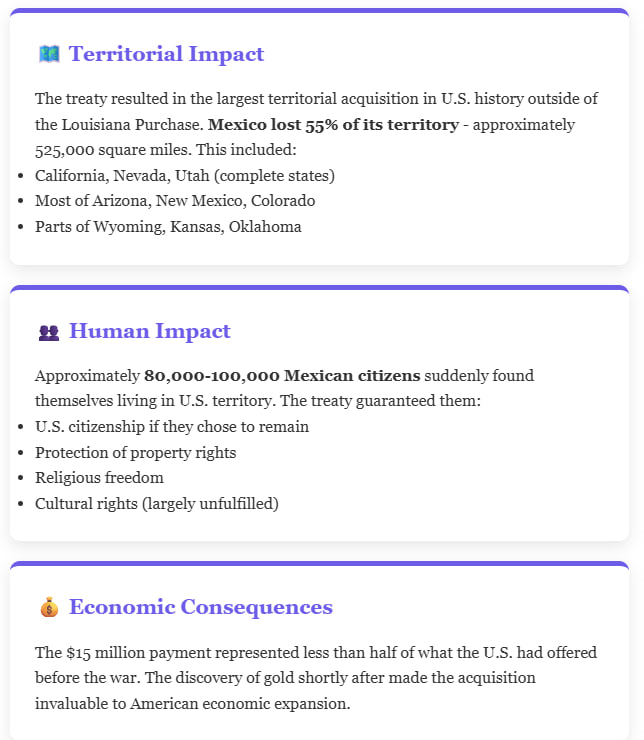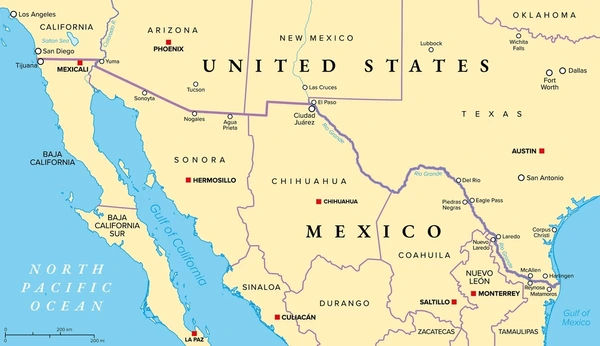



Protests in Los Angeles are deeply connected to the fact that California was once part of Mexico. The US acquired the territory after the Mexican-American War, but the cultural and ancestral ties for many residents remain. Waving the Mexican flag is not a rejection of America, but a claim to a layered identity.

Copyright infringement not intended
Picture Courtesy: INDIAN EXPRESS
Recent anti-Immigration and Customs Enforcement (ICE) protests have gained significant attention, especially in California.
These protests started on June 6, 2025, in Los Angeles after "military-style anti-Immigration and Customs Enforcement (ICE) raids" led to the detention of 44 people, many of whom were of Mexican.
For many protesters, the flag is not a rejection of American identity but an assertion of a foundational Mexican heritage that crosses the U.S. border. The saying, "We didn't cross the border, the border crossed us," highlights that their ancestors were living in the region long before it became part of the United States.
Nearly 40% of Californians are Hispanic, and over 30% trace their ancestry directly to Mexico.
16th Century - Spanish Discovery => Spanish conquistadors first encountered Baja California peninsula, naming it "California" after a mythical island from Spanish literature. Initial focus remained on richer Central and South American territories.
Mid-18th Century - Formal Colonization => Spain begins systematic colonization of Alta California to counter Russian expansion. Establishment of 21 missions under leaders like Junípero Serra, creating agricultural and livestock centers. Devastating impact on indigenous populations through forced conversion and labor.
1821 - Mexican Independence => Alta California becomes a territory of the newly independent Mexican Republic. Mexico removes Spanish trade restrictions, allowing direct commerce with Anglo-Americans. Liberalized land ownership encourages American immigration.
1845-1846 - Escalating Tensions => U.S. annexes Texas, viewed by Mexico as a sovereignty violation. US President orders troops into disputed territory after Mexico rejects offer to sell Alta California and New Mexico to US.
February 1848 - Treaty of Guadalupe Hidalgo => Mexico forced to surrender over half its territory for $15 million, to the US. This massive land transfer includes present-day California, Nevada, Utah, Arizona, New Mexico, and parts of other states.

1848-1850 - California Gold Rush => Discovery of gold at Sutter's Mill triggers massive influx of over 300,000 people, rapidly solidifying American control and leading to California statehood in 1850.
Source:
|
PRACTICE QUESTION Q. Consider the following statements about Mexico: 1. Mexico is bordered by the Pacific Ocean to the west and the Gulf of Mexico and Caribbean Sea to the east. 2. The Isthmus of Tehuantepec represents the shortest distance between the Gulf of Mexico and the Atlantic Ocean. 3. The Yucatán Peninsula separates the Caribbean Sea from the Gulf of Mexico. How many of the above statements are correct? A) Only one B) Only two C) All three D) None Answer: B Explanation: Statement 1 is correct: Mexico's western and southern shores are on the Pacific Ocean, while its eastern shore is bordered by the Gulf of Mexico and the Caribbean Sea. Statement 2 is incorrect: The Isthmus of Tehuantepec is the narrowest part of Mexico, but it represents the shortest distance between the Gulf of Mexico and the Pacific Ocean, not the Atlantic Ocean. The Gulf of Mexico is itself part of the Atlantic Ocean. Statement 3 is correct: The large landmass of the Yucatán Peninsula acts as a natural divider, separating the waters of the Gulf of Mexico to its west from the Caribbean Sea to its east. |

© 2026 iasgyan. All right reserved